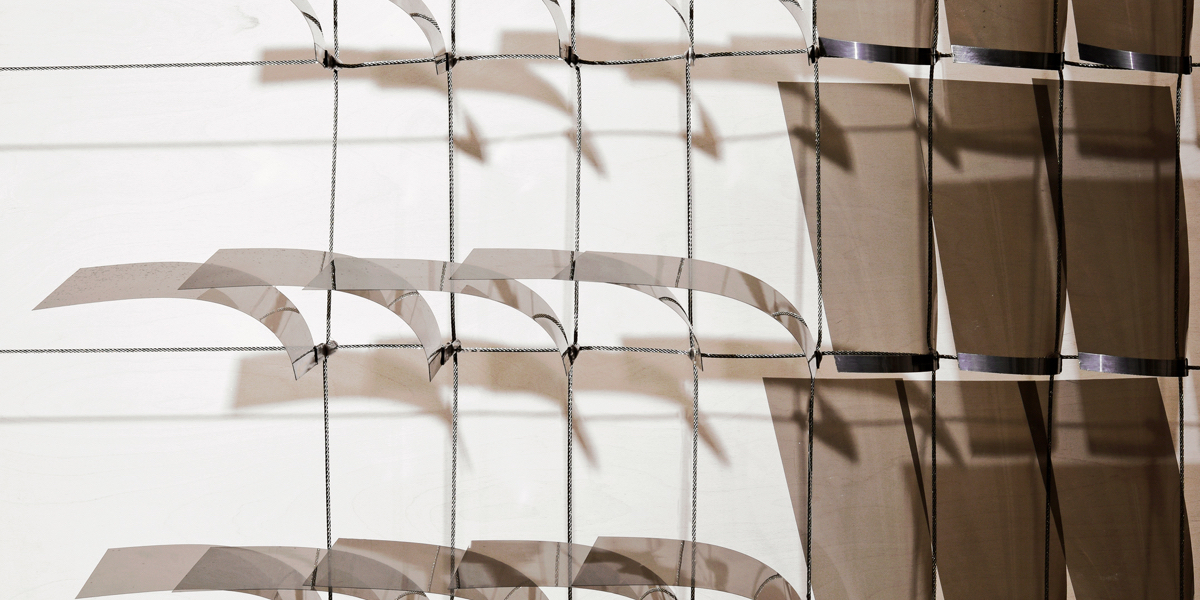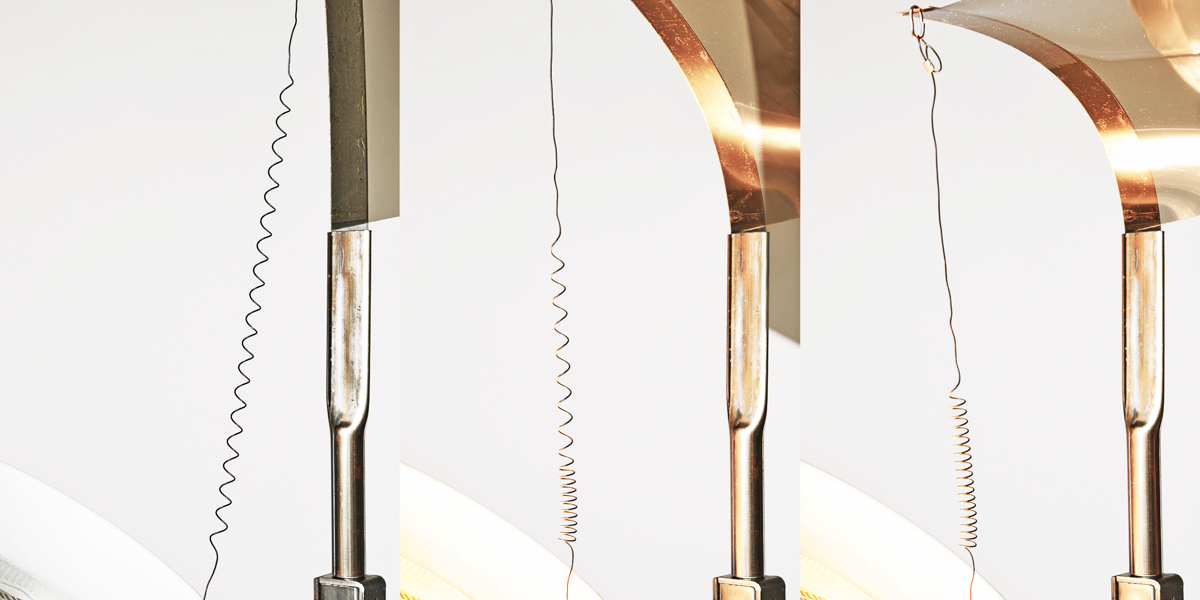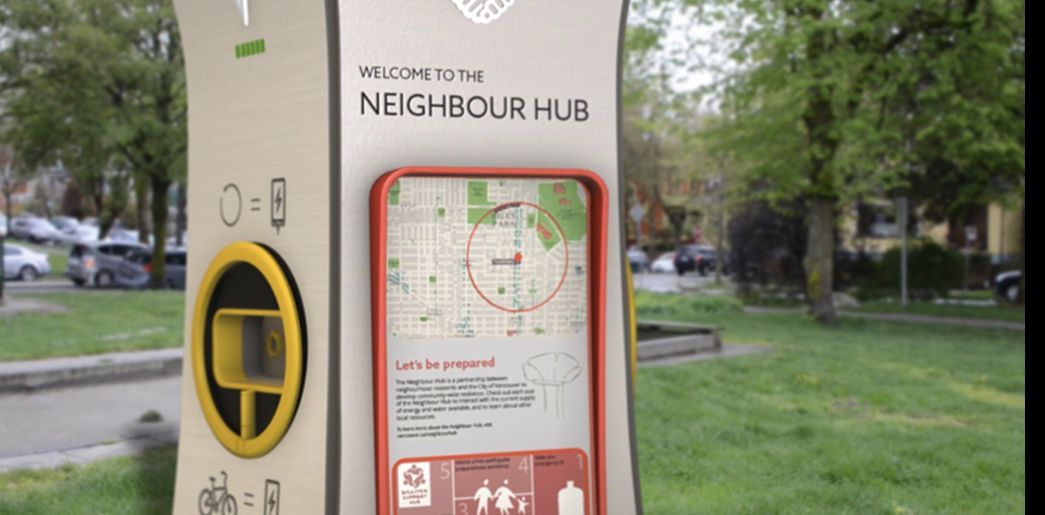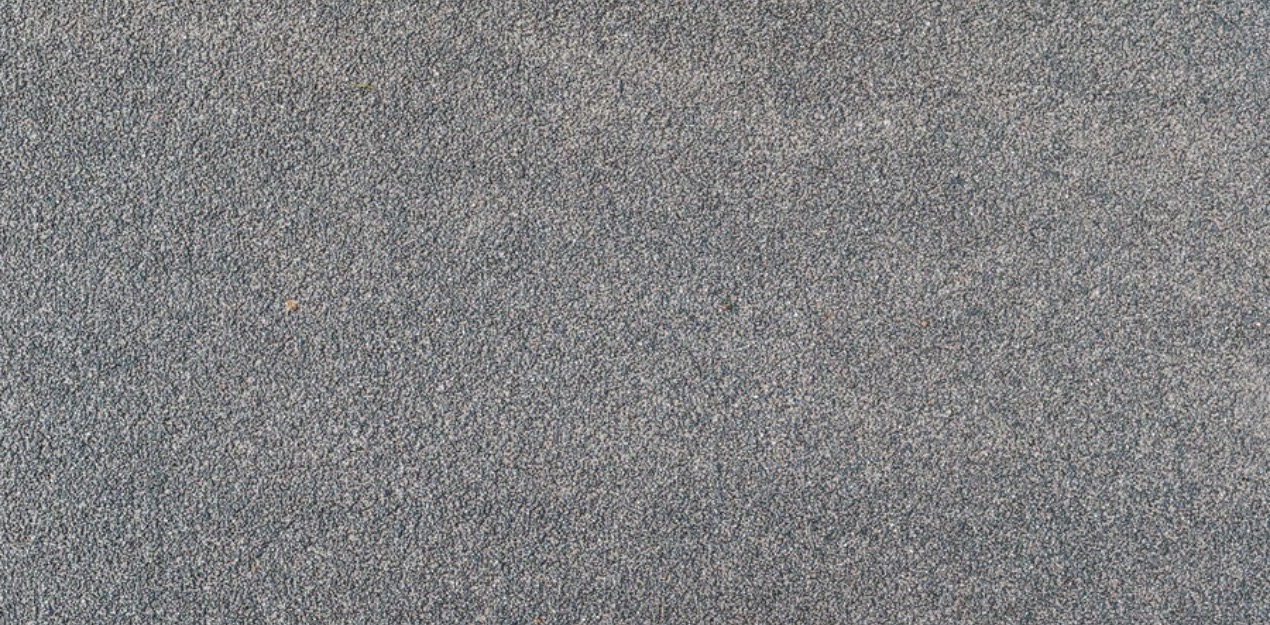AWARD YEAR
2023
CATEGORY
Community
GOALS
Good Health & Well-being, Affordable & Clean Energy, Industry, Innovation & Infrastructure, Sustainable Cities & Communities, Responsible Consumption & Production
KEYWORDS
Organic Solar Panels, energy independency, phototropism, smart materials, adaptive city
COUNTRY
Germany
DESIGNED BY
Vivian Tamm
WEBSITE
https://www.viviantamm.com
In between _a new solar dynamic aesthetic
Organic photovoltaic modules that self-sufficiently respond to changes in the lighting conditions
How does it work?
IN BETWEEN is a surface structure of organic photovoltaic foils, that self-sufficiently adapt to the changing conditions of the daylight. Inspired by the spontaneous opening and closing movements of plants known as phototropism, a shape memory alloy animates sun-exposed modules to independently straighten up and close the covered surface. Shaded modules return to a relaxed resting state that allows the view and light to pass through.
Complementing the new technology of flexible, semi-transparent solar foils with the capability of performing smart shading, not only enables urban environments of any orientation and inclination, such as glass facades, roof gardens or parks, to become energetically active. It also enriches the space behind with a balanced microclimate and a dynamic interplay between light and shadow. While becoming a life-enhancing, cultural matter, solar energy harvesting can open up urban space through a new solar dynamic aesthetic.
Why is it needed?
The largest energy consumers on earth are buildings, using up to 40% of the global energy. In urban areas, most of the production functions covering this demand are outsourced from the living into the surrounding environment. This trend is applying enormous stress to the surrounding biosphere, while causing a loss of awareness of the scale and relevance of sustainable energy production and consumption. The energy dependency of cities further requires immense transport infrastructure, involving significant amounts of valuable resources and energy losses.
However, activating dead urban surfaces would offer plenty of opportunities to generate enough renewable energy to power entire cities. The concept "In between" explores potentials within the combination of innovative technologies, to transform buildings from consumers into providers, creating sensitive, energy-independent ecosystems.
How does it improve life?
In forest ecosystems, the canopy of trees protects the underlying ground from excessive solar radiation. The individual leaves reach for the sun to harvest as much energy as possible, which is then stored and distributed decentrally within the tree and via the root system.
In urban landscapes, it is the buildings that rise from the soil into the sky, cast shadows and provide us with habitat. Traditionally, the concrete frames separate their interior from exterior space with static walls, emphasising on indoor livability.
Within the solar concept in between I am questioning the rigidity and anonymity of urban landscapes, aiming to transform them into adaptive, self-sufficient, and ecologically and socially inclusive ones. Like a semi-permeable membrane, the solar structure is separating different urban settings dynamically, in order to create sensitive and vibrant ecosystems that embrace and celebrate the presence of more than human species.





